British values: Hugh Broughton Architects' redevelopment of the Henry Moore Foundation
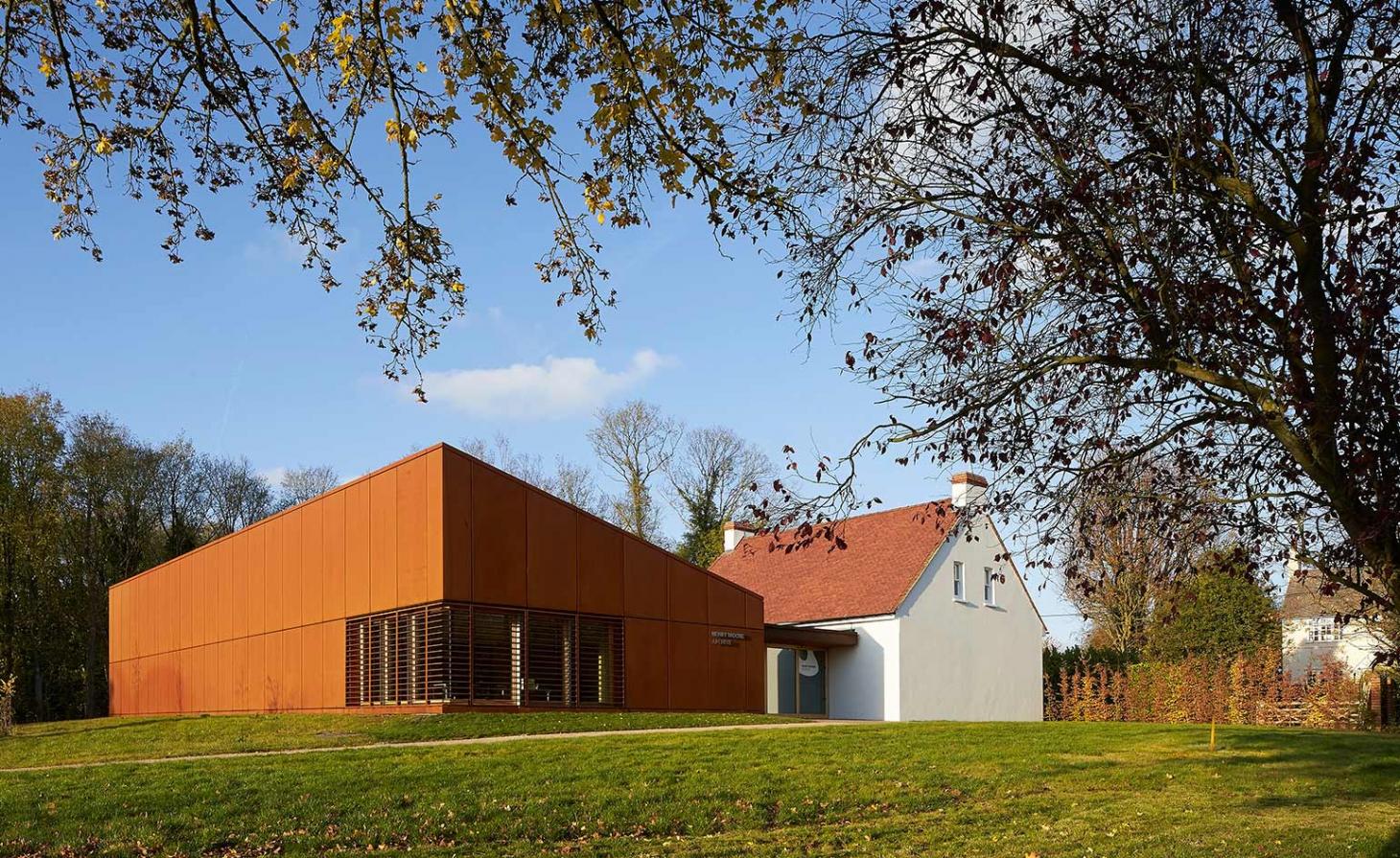
The Henry Moore Foundation – celebrating 40 years this year, with a series of special events – has unveiled its redeveloped estate, Dane Tree House, in Hertfordshire. The Foundation is housed in Moore’s former home and studios in Perry Green, a 70-acre site with landscaped gardens designed by Moore’s wife, Irina Moore.
The new buildings – including a new library, cafe, shop and archive facility – were executed by British firm, Hugh Broughton Architects. The design ‘maximises views of Moore’s sculptures, set in the gardens’, says Hugh Broughton, with generous glass giving onto the rural surroundings, a landscape in which Moore found considerable inspiration for his works, and where sculptures such such as Sheep Piece (1971-72) and Reclining Figure: Draped 1952-53) are now displayed.
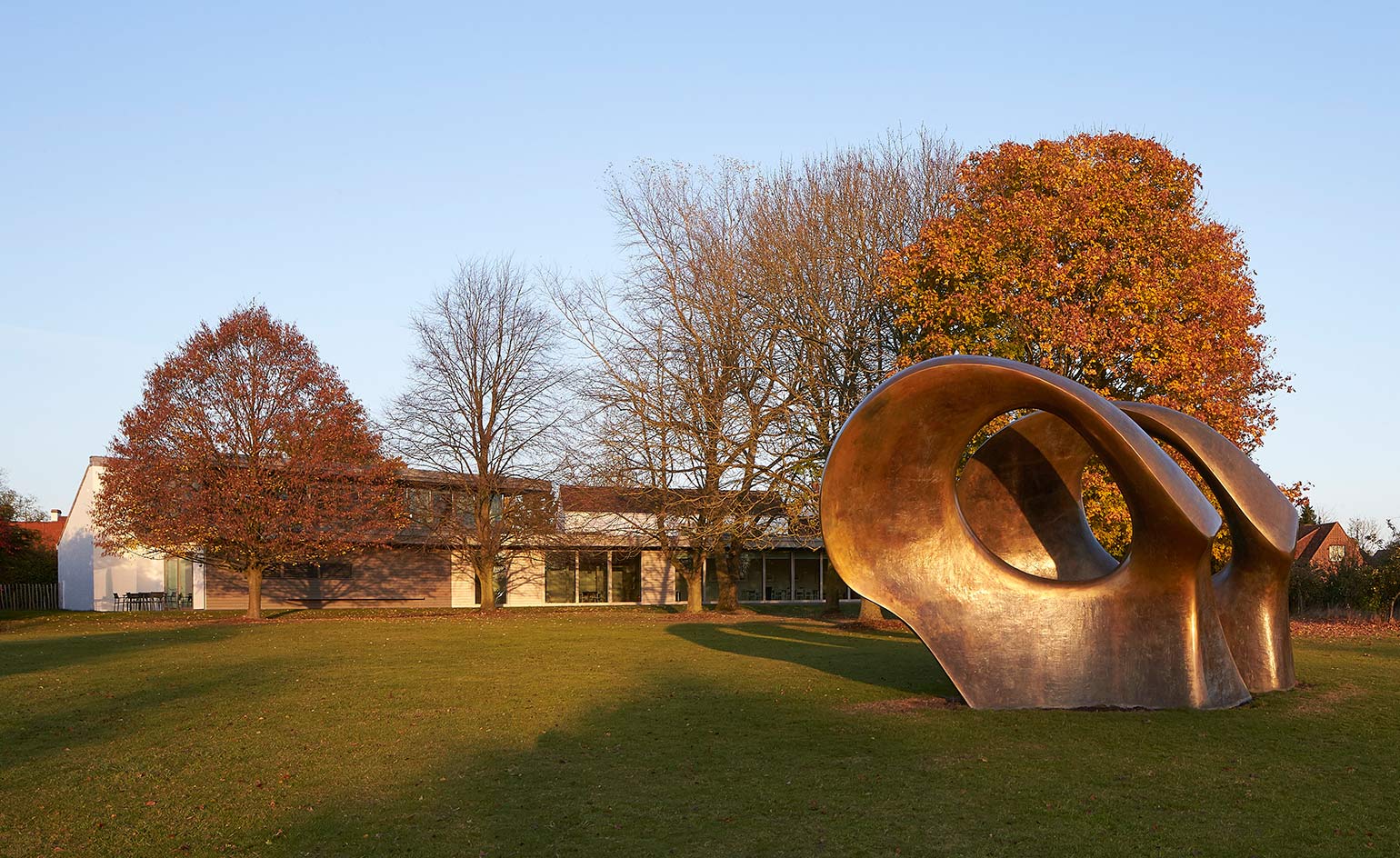
The buildings are designed to increase the views of the Henry Moore sculptures in the grounds and gardens designed by Moore’s wife, Irina Moore
The Foundation reopened for the Easter weekend with an exhibition, ‘Becoming Henry Moore’, that goes back to the beginning, reviewing the artist’s early work and inspiration, which he found not only in the undulating curves of the countryside, but in artists like Picasso, Hepworth, Michelangelo and Epstein – all on view until October, alongside rare works by Moore himself, such as a collection of drawings from the 1920s that clearly show his singular style emerging.
Having already completed renovations on the sculpture stores at the Foundation in 2011, Hugh Broughton’s latest developments will improve the scope of the Foundation. Other major improvements include an extension to the library, revamped with oxidised steel panels, that also address the optimum storage conditions needed to safely store the Foundation’s valuable books, documents, and photographs.
There’s an emphasis throughout the design too on sustainability; a shared ground source heat pump will cool and warm the two buildings, and the use of timber implies aesthetic harmony and neutrality, in the same way Moore’s sculptures serenely inhabit the outdoors. Working with demanding atmospheres and unusual environments is something London-based Hugh Broughton are particularly good at – the firm is behind the award-winning Halley VI British Antarctic Research Station and the Juan Carlos I Antarctic Research Station (which is currently in construction).
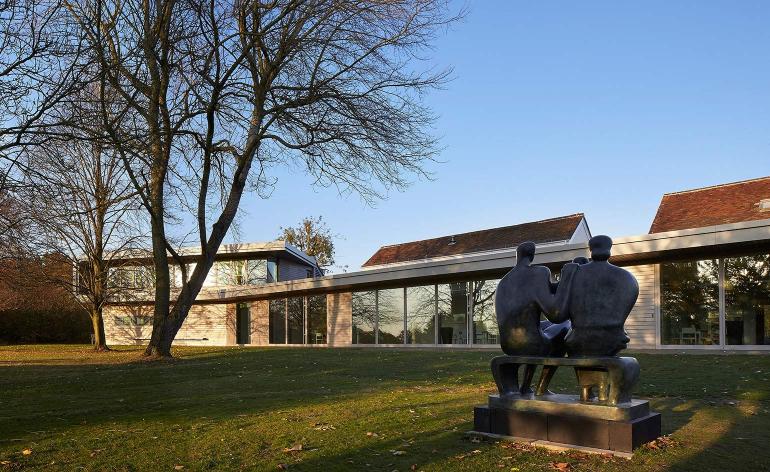
The Henry Moore Foundation celebrates 40 years this year
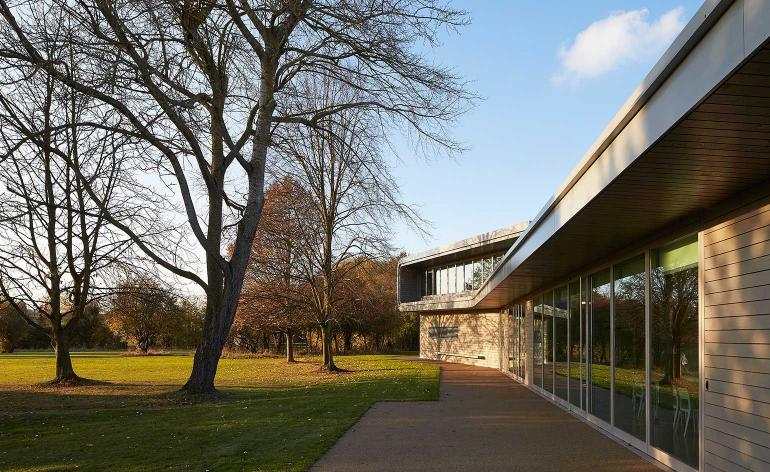
Hugh Broughton Architects completed renovations on the sculpture stores at the Henry Moore Foundation in 2011
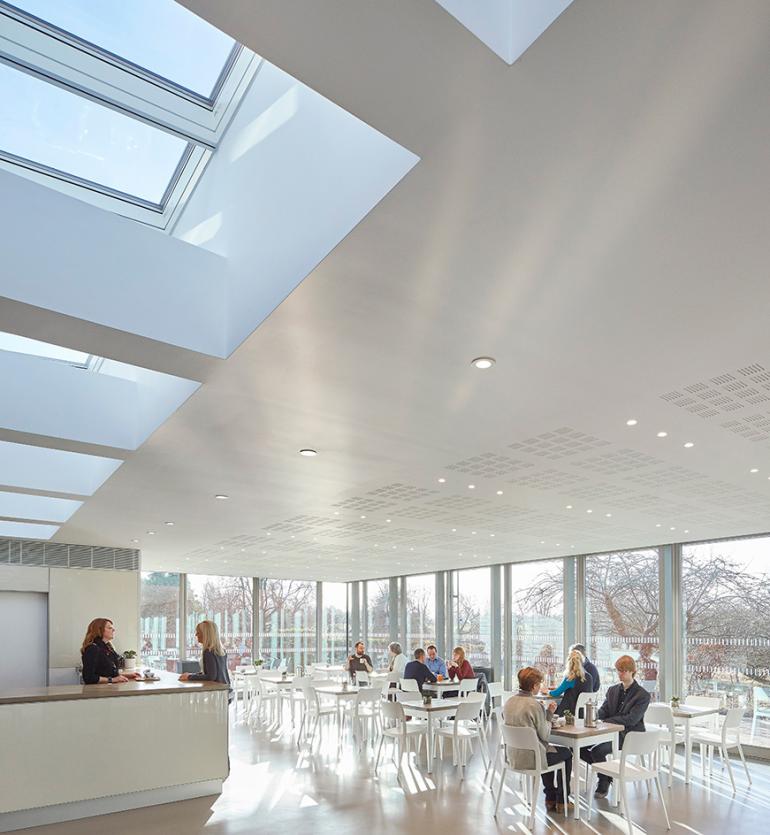
The new structures house a new library, cafe, shop and archive facility

The shop opens up to the cafe which overlooks the grounds of the Foundation
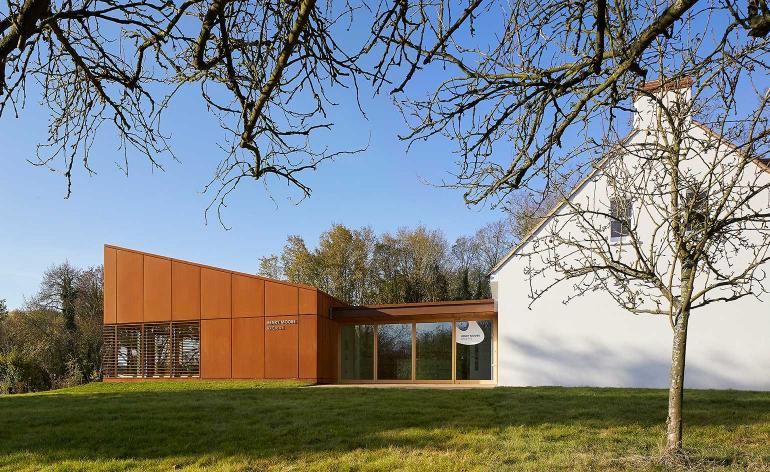
Oxidised steel panels clad the extended library and archive building
INFORMATION
For more information, visit the Hugh Broughton Architects website and the Henry Moore Foundation website
ADDRESS
Henry Moore Studios & Gardens
Dane Tree House
Perry Green
Herts SG10 6EE
Wallpaper* Newsletter
Receive our daily digest of inspiration, escapism and design stories from around the world direct to your inbox.
Charlotte Jansen is a journalist and the author of two books on photography, Girl on Girl (2017) and Photography Now (2021). She is commissioning editor at Elephant magazine and has written on contemporary art and culture for The Guardian, the Financial Times, ELLE, the British Journal of Photography, Frieze and Artsy. Jansen is also presenter of Dior Talks podcast series, The Female Gaze.
-
 Put these emerging artists on your radar
Put these emerging artists on your radarThis crop of six new talents is poised to shake up the art world. Get to know them now
By Tianna Williams
-
 Dining at Pyrá feels like a Mediterranean kiss on both cheeks
Dining at Pyrá feels like a Mediterranean kiss on both cheeksDesigned by House of Dré, this Lonsdale Road addition dishes up an enticing fusion of Greek and Spanish cooking
By Sofia de la Cruz
-
 Creased, crumpled: S/S 2025 menswear is about clothes that have ‘lived a life’
Creased, crumpled: S/S 2025 menswear is about clothes that have ‘lived a life’The S/S 2025 menswear collections see designers embrace the creased and the crumpled, conjuring a mood of laidback languor that ran through the season – captured here by photographer Steve Harnacke and stylist Nicola Neri for Wallpaper*
By Jack Moss
-
 An octogenarian’s north London home is bold with utilitarian authenticity
An octogenarian’s north London home is bold with utilitarian authenticityWoodbury residence is a north London home by Of Architecture, inspired by 20th-century design and rooted in functionality
By Tianna Williams
-
 What is DeafSpace and how can it enhance architecture for everyone?
What is DeafSpace and how can it enhance architecture for everyone?DeafSpace learnings can help create profoundly sense-centric architecture; why shouldn't groundbreaking designs also be inclusive?
By Teshome Douglas-Campbell
-
 The dream of the flat-pack home continues with this elegant modular cabin design from Koto
The dream of the flat-pack home continues with this elegant modular cabin design from KotoThe Niwa modular cabin series by UK-based Koto architects offers a range of elegant retreats, designed for easy installation and a variety of uses
By Jonathan Bell
-
 Are Derwent London's new lounges the future of workspace?
Are Derwent London's new lounges the future of workspace?Property developer Derwent London’s new lounges – created for tenants of its offices – work harder to promote community and connection for their users
By Emily Wright
-
 Showing off its gargoyles and curves, The Gradel Quadrangles opens in Oxford
Showing off its gargoyles and curves, The Gradel Quadrangles opens in OxfordThe Gradel Quadrangles, designed by David Kohn Architects, brings a touch of playfulness to Oxford through a modern interpretation of historical architecture
By Shawn Adams
-
 A Norfolk bungalow has been transformed through a deft sculptural remodelling
A Norfolk bungalow has been transformed through a deft sculptural remodellingNorth Sea East Wood is the radical overhaul of a Norfolk bungalow, designed to open up the property to sea and garden views
By Jonathan Bell
-
 A new concrete extension opens up this Stoke Newington house to its garden
A new concrete extension opens up this Stoke Newington house to its gardenArchitects Bindloss Dawes' concrete extension has brought a considered material palette to this elegant Victorian family house
By Jonathan Bell
-
 A former garage is transformed into a compact but multifunctional space
A former garage is transformed into a compact but multifunctional spaceA multifunctional, compact house by Francesco Pierazzi is created through a unique spatial arrangement in the heart of the Surrey countryside
By Jonathan Bell